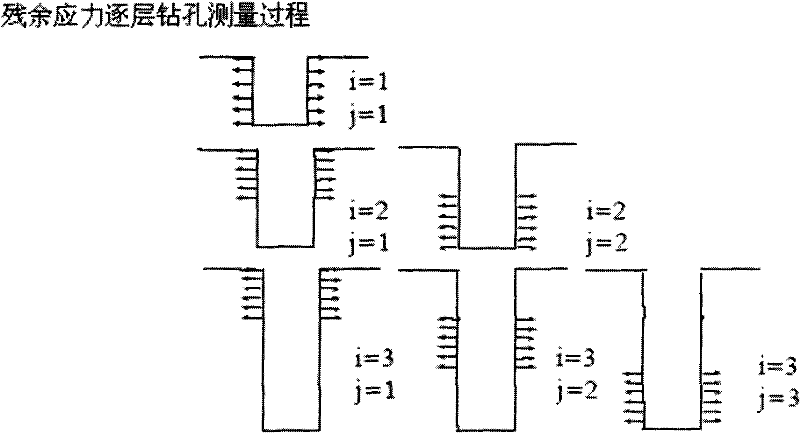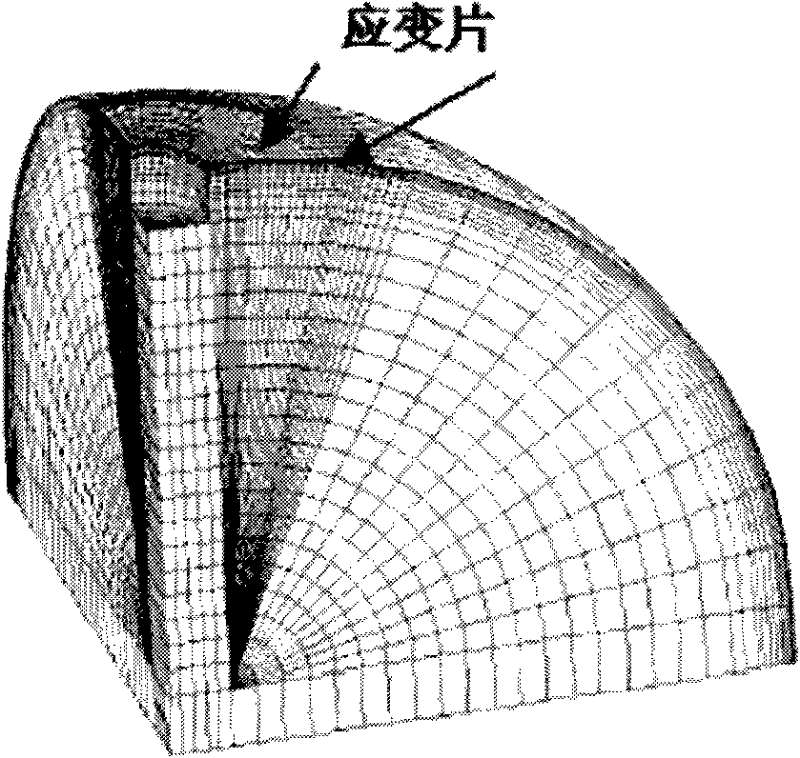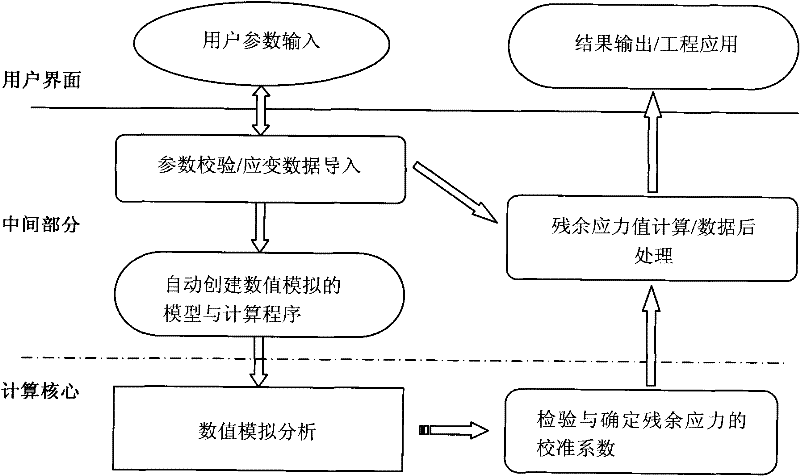Method for detecting residual stress based on inverse problem
A technology of residual stress and detection method, applied in the direction of measuring force, measuring device, special data processing application, etc., can solve the problem of not taking into account the different calibration coefficients of residual stress, not considering the influence of removing residual stress, and insufficient residual stress data. Accuracy and other issues, to achieve the effect of easy operation and promotion, low cost and strong practicability
- Summary
- Abstract
- Description
- Claims
- Application Information
AI Technical Summary
Problems solved by technology
Method used
Image
Examples
specific Embodiment 1
[0043] The plane structure workpiece is drilled once to detect the residual stress. It is a stainless steel laser welded honeycomb panel with a length of 18cm, a width of 12cm, and a thickness of 2.0mm. The welding residual stress value is measured. The residual stress value of the workpiece is detected by the method of reverse thinking to detect the residual stress. Use ANSYS or ABAQUS numerical simulation software to calculate the residual stress calibration coefficient A=-5.87591418476E-07, B=-1.41076852438E-06 for the material and structure. Then the actual small hole stress release method is used to measure the strain value at this position. According to the residual stress calibration coefficient and the measured strain value, the detected welding residual stress is σ 1 = -516.98MPa and σ 2 = -483.15MPa.
specific Embodiment 2
[0044] Detection of residual stress and its distribution along the thickness of non-planar structure workpieces. The test is a Q235 steel cylindrical structure. The diameter of the small hole is 2mm, and the holes are drilled layer by layer in 12 steps along the thickness direction. The number of drilling layers is 12, and the depth is 0.02mm, 0.04mm, 0.08mm, 0.12mm, 0.16mm, 0.2mm, 0.3mm, 0.4mm. , 0.5mm, 0.6mm, 0.8mm, 1.0mm. The residual stress calibration coefficient A obtained by self-programming calculation using this method jj The relationship between the sequence and the diameter of the sample cylinder is as follows Figure 5 Shown. There is a difference between the residual stress detected by the planar element using this method and the residual stress detected by the cylindrical element. The residual stress value of the cylindrical structure detected by the cylindrical element using this method is more accurate, and the detection error is less than 5%. The relationship...
PUM
 Login to View More
Login to View More Abstract
Description
Claims
Application Information
 Login to View More
Login to View More - R&D
- Intellectual Property
- Life Sciences
- Materials
- Tech Scout
- Unparalleled Data Quality
- Higher Quality Content
- 60% Fewer Hallucinations
Browse by: Latest US Patents, China's latest patents, Technical Efficacy Thesaurus, Application Domain, Technology Topic, Popular Technical Reports.
© 2025 PatSnap. All rights reserved.Legal|Privacy policy|Modern Slavery Act Transparency Statement|Sitemap|About US| Contact US: help@patsnap.com



